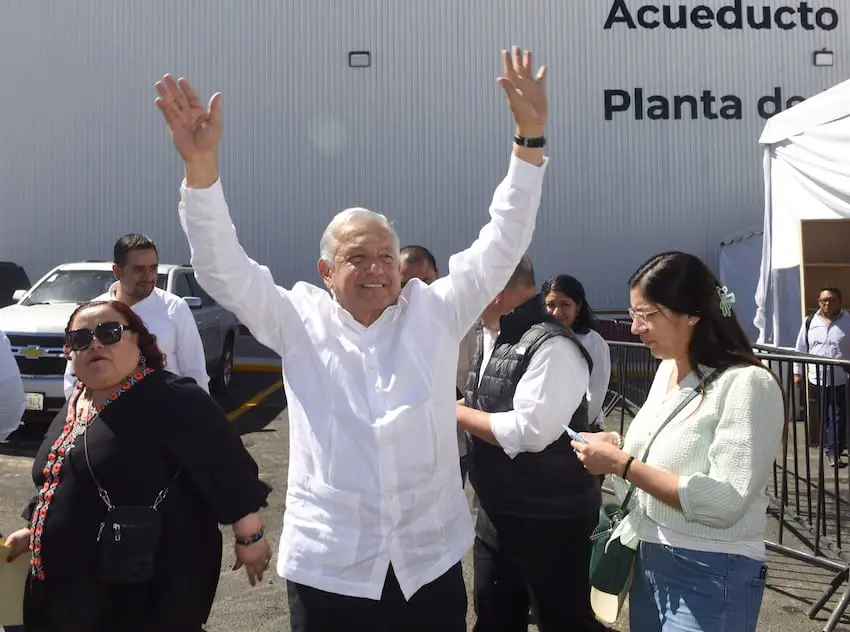President Andrés Manuel López Obrador inaugurated the first stage of an aqueduct system on Friday that will eventually supply Guadalajara with up to 3,000 liters of water per second.
“I am very pleased that, beginning today Guadalajara will be receiving [an additional] 1,000 liters of water per second,” the president said during the event. “This will be a significant help … especially to the marginalized sectors who will now have freer access to water, which is a fundamental right.”

President López Obrador and Governor Enrique Alfaro of Jalisco presided over the ceremony in Valle de Guadalupe, northeast of Guadalajara, during which the El Salto aqueduct and its pumping station were activated.
The El Salto aqueduct connects the controversial El Zapotillo dam in the Los Altos region of Jalisco and the nearby El Salto dam with the El Purgatorio dam on the outskirts of Guadalajara, the Jalisco state capital and home to 5.26 million people in the greater metropolitan area. The water will be stored en route at the La Red and Calderón reservoirs, which together have been supplying 25% of Guadalajara’s water.
“If this project had not been completed, roughly 1 million Guadalajara area residents would have been without water by April,” said Alfaro, who praised the efforts of this administration… “Three presidents and three governors had failed to address our water crisis …but the [new government] came to us and said ‘let’s look for alternatives’.”
The El Zaptillo dam project had been delayed for nearly 20 years as residents of three villages in the Los Altos region fought against the plan that would have inundated their homes to create a reservoir.

The El Salto-La Red-Calderón system avoids this scenario by linking El Zapotillo to the downstream dams and reservoirs via aqueducts. Both the La Red and Calderón reservoirs are capable of additional storage, witheach at less than 30% capacity this month.
The project cost 8.5 billion pesos (US $496 million) and first aims to gradually build up storage at the reservoirs before additional dam gates are opened. The governor anticipates that by May the pumps at El Zapotillo will increase their production to 2,000 liters per second.
The president said he plans to visit El Zapotillo in June.
With reports from El Informador and El Economista
